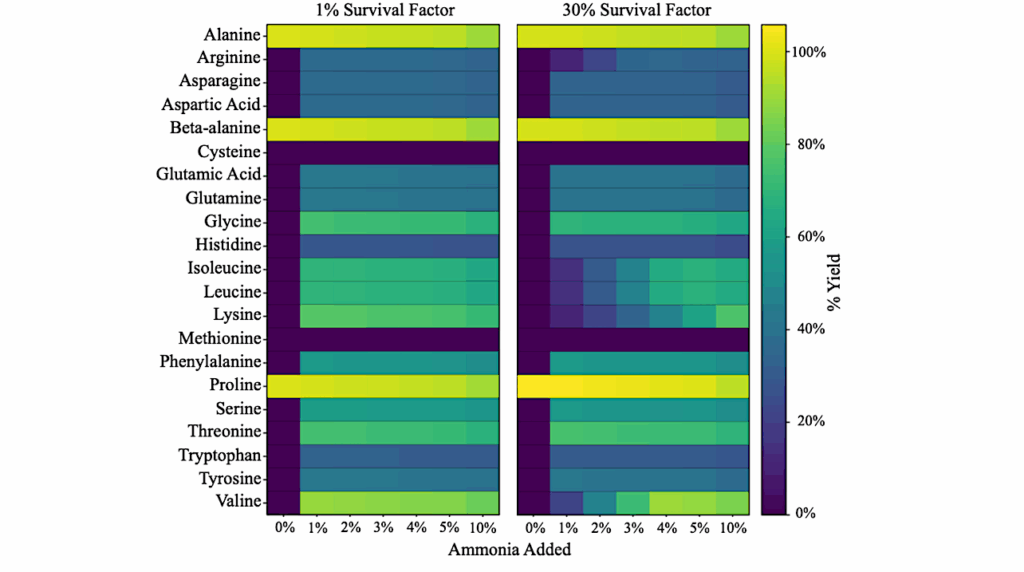Methane-saturated Layers Limit The Observability Of Impact Craters On Titan

As the only icy satellite with a thick atmosphere and liquids on its surface, Titan represents a unique end-member to study the impact cratering process.
Unlike craters on other Saturnian satellites, Titan’s craters are preferentially located in high-elevation regions near the equator. This led to the hypothesis that the presence of liquid methane in Titan’s lowlands affects crater morphology, making them difficult to identify. This is because surfaces covered by weak fluid-saturated sediment limit the topographic expression of impact craters, as sediment moves into the crater cavity shortly after formation.
Here we simulate crater-forming impacts on Titan’s surface, exploring how a methane-saturated layer overlying a methane-clathrate layer affects crater formation. Our numerical results show that impacts form smaller craters in a methane-clathrate basement than a water-ice basement, due to the differences in strength. We find that the addition of a methane-saturated layer atop this basement reduces crater depths and influences crater morphology. The morphology of impact craters formed in a thin methane-saturated layer are similar to those in a “dry” target, but a thick saturated layer produces an impact structure with little to no topography. A thick methane-saturated layer (thicker than 40% of the impactor diameter) could explain the dearth of craters in the low-elevation regions on Titan.
Shigeru Wakita, Brandon C. Johnson, Jason M. Soderblom, Jahnavi Shah, Catherine D. Neish
Comments: 33 pages, 12 figures, accepted for publication in PSJ
Subjects: Earth and Planetary Astrophysics (astro-ph.EP)
Cite as: arXiv:2201.09587 [astro-ph.EP] (or arXiv:2201.09587v1 [astro-ph.EP] for this version)
Submission history
From: Shigeru Wakita
[v1] Mon, 24 Jan 2022 10:52:58 UTC (2,203 KB)
https://arxiv.org/abs/2201.09587
Astrobiology,








